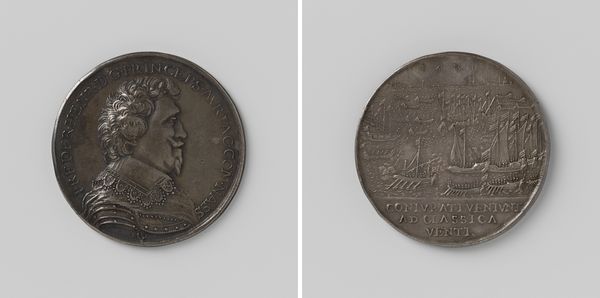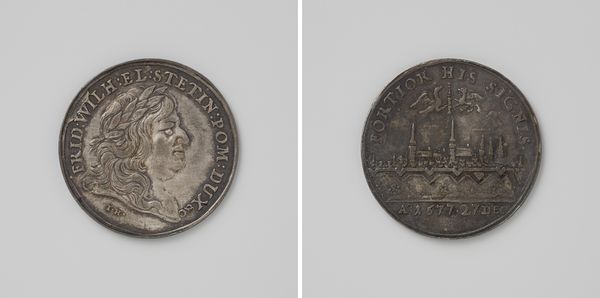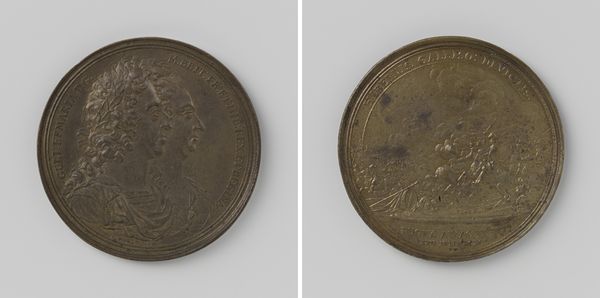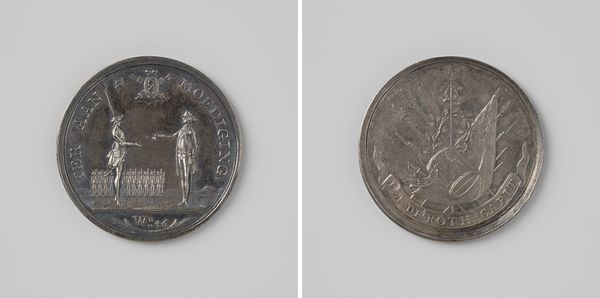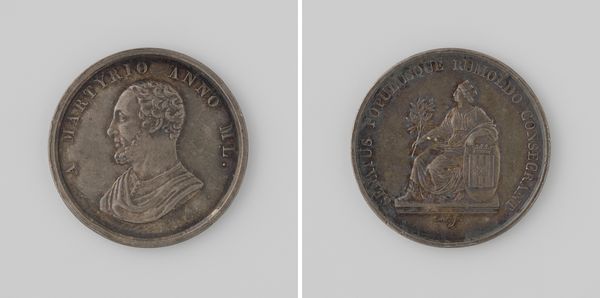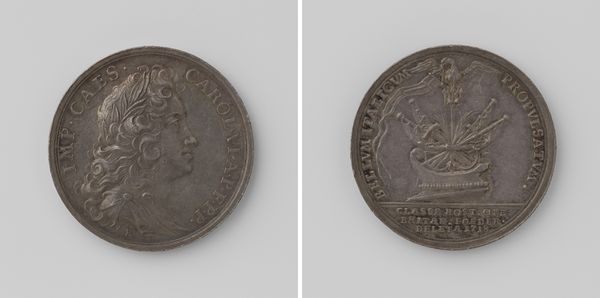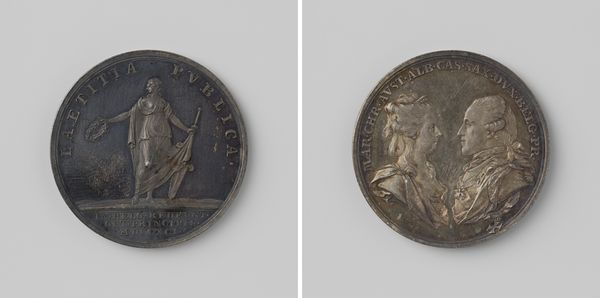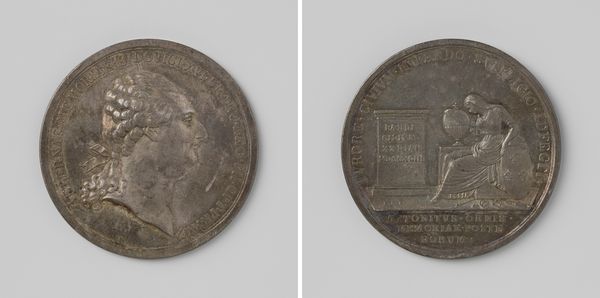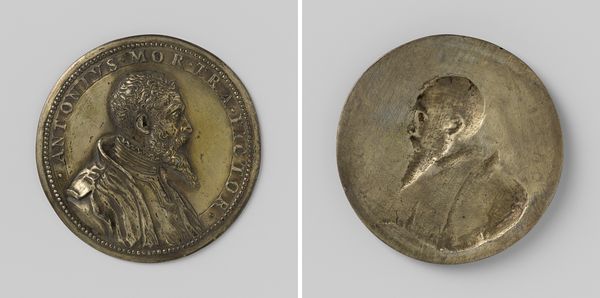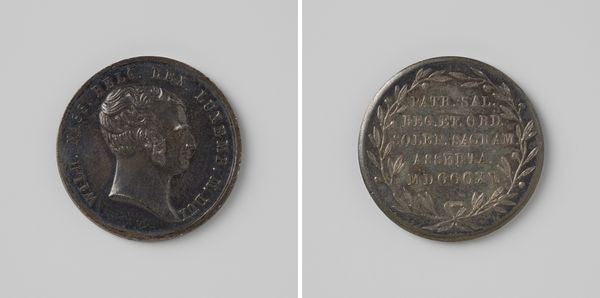
Overlijden van Daniel Bernouilli, hoogleraar in de ontleed- en kruidkunde, natuurkunde en bespiegelende wijsbegeerte te Basel 1782
0:00
0:00
metal, sculpture, engraving
#
portrait
#
medal
#
neoclacissism
#
metal
#
sculpture
#
sculpture
#
history-painting
#
engraving
Dimensions: diameter 4.2 cm, weight 28.68 gr
Copyright: Rijks Museum: Open Domain
Curator: What we're looking at is a fascinating piece from 1782: a metal engraving titled "Overlijden van Daniel Bernouilli, hoogleraar in de ontleed- en kruidkunde, natuurkunde en bespiegelende wijsbegeerte te Basel," or "The Death of Daniel Bernoulli, Professor of Anatomy and Herbal Medicine, Physics and Speculative Philosophy in Basel," created by Abraham Abramson. Quite a mouthful, isn’t it? Editor: My first impression? It feels very formal and commemorative, almost like a coin you’d hold and ponder the weight of knowledge and mortality. There's a stark contrast between the two sides...it sets a rather contemplative mood. Curator: Exactly. One side depicts a profile of Daniel Bernoulli himself, very classical in its execution, reminiscent of Roman portraiture. The other shows a lighthouse by the sea, seemingly quite symbolic. Editor: Yes, that profile has such a detached air, cool and precise. You get the feeling that the man behind the image had an incredibly brilliant mind. The sharp edges of the cut give Bernoulli an air of almost…permanence, of defiance in the face of what waits ahead for us all. I can see why the artist went this route, capturing Bernoulli like an Emperor, if just for a moment frozen on silver! It's a strong move for something made after someone's passing, in a reflective way, to consider them invincible. Curator: Absolutely. And if we delve into the symbolic language, that lighthouse is fascinating. Lighthouses often signify guidance, illumination, hope. Placed alongside Bernoulli’s portrait, it suggests that his work and teachings served as a beacon of enlightenment, guiding others. The sea itself could represent the vast, uncharted territories of scientific exploration he navigated. Editor: I wonder if there is even a direct through-line to a specific theory or event relating to Bernoulli. If we understand more of the background here, could we see that image in new ways? In art we often forget that it is possible to learn our way toward resonance with a piece just through research, even where we had no connection before! Curator: Perhaps. The Neoclassical style emphasizes reason and order, aligning well with Bernoulli's scientific pursuits. The clean lines and precise detail, the emphasis on clarity – all speak to the values he embodied as a scholar. Editor: So, on one hand, we're commemorating an individual. But equally, we're using his image to make grander claims about a cultural era and a knowledge base as a whole? A bold and frankly kind of sad task. Still, even on this little disc, this potent fellow's memory finds a way. Curator: I agree. It's a reminder that even in the face of death, a person's contributions can continue to shine, much like that beacon of light against the dark sea.
Comments
No comments
Be the first to comment and join the conversation on the ultimate creative platform.

